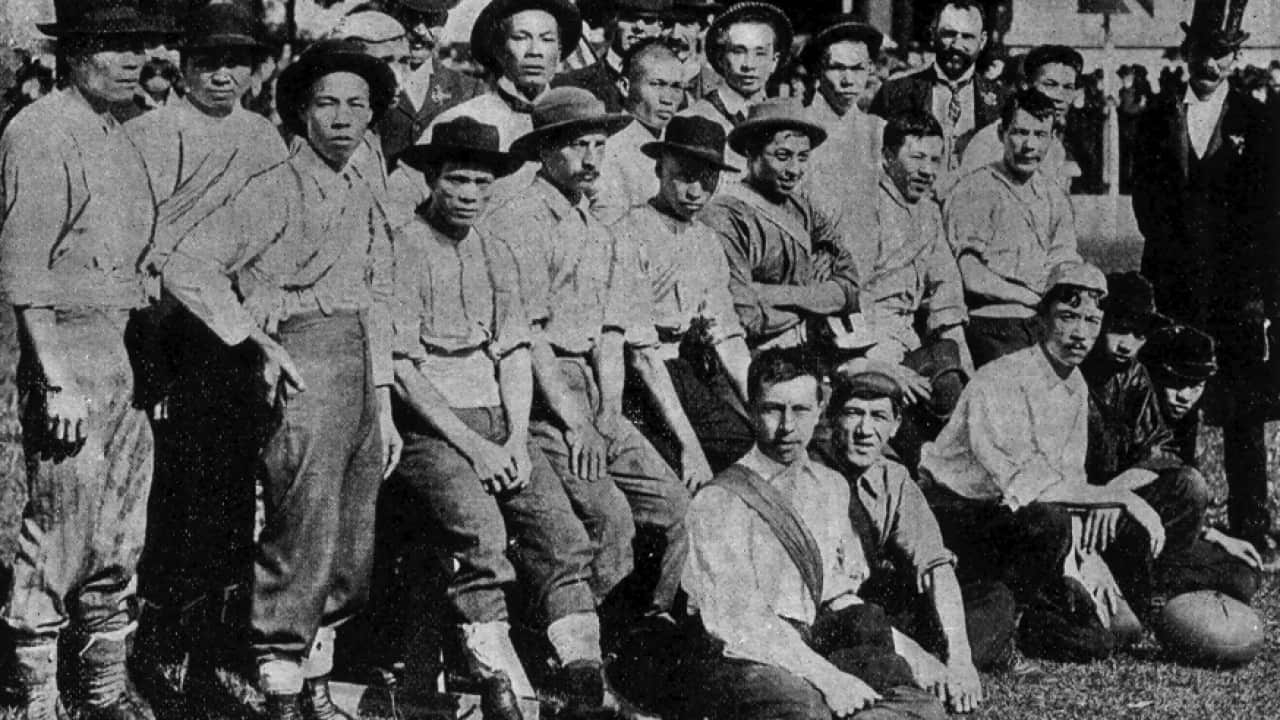Key Points
- James Chung Gon came to Australia as a young man hoping to strike it rich during the 'Gold Rush'.
- He then became a grocer, businessman and philanthropist. And the Chung Gon family became a household name in Launceston.
- To celebrate his legacy, 113 of his descendants from around the world travelled to Launceston last year for a family reunion.
Not every newborn baby makes it onto the front page of their local newspaper, but Mei Ling Chung Gon (nee Niel) was an exception.
When she was born in Hobart in 1940, a local Tasmanian newspaper, The Mercury, published a picture of her and her Australia-born mother, Gladys Sym Choon, describing her as "a precious Chinese-Australian infant".
As the first-born of her generation in the Chung Gon family, Mei Ling said she has lived in the spotlight ever since.
"I was featured all the time ... the town watched me grow up," she said.
"I had my 21st birthday in London, and the whole of Hobart knew because they sent back photos and reports," Mei Ling, now 84, told SBS Chinese.
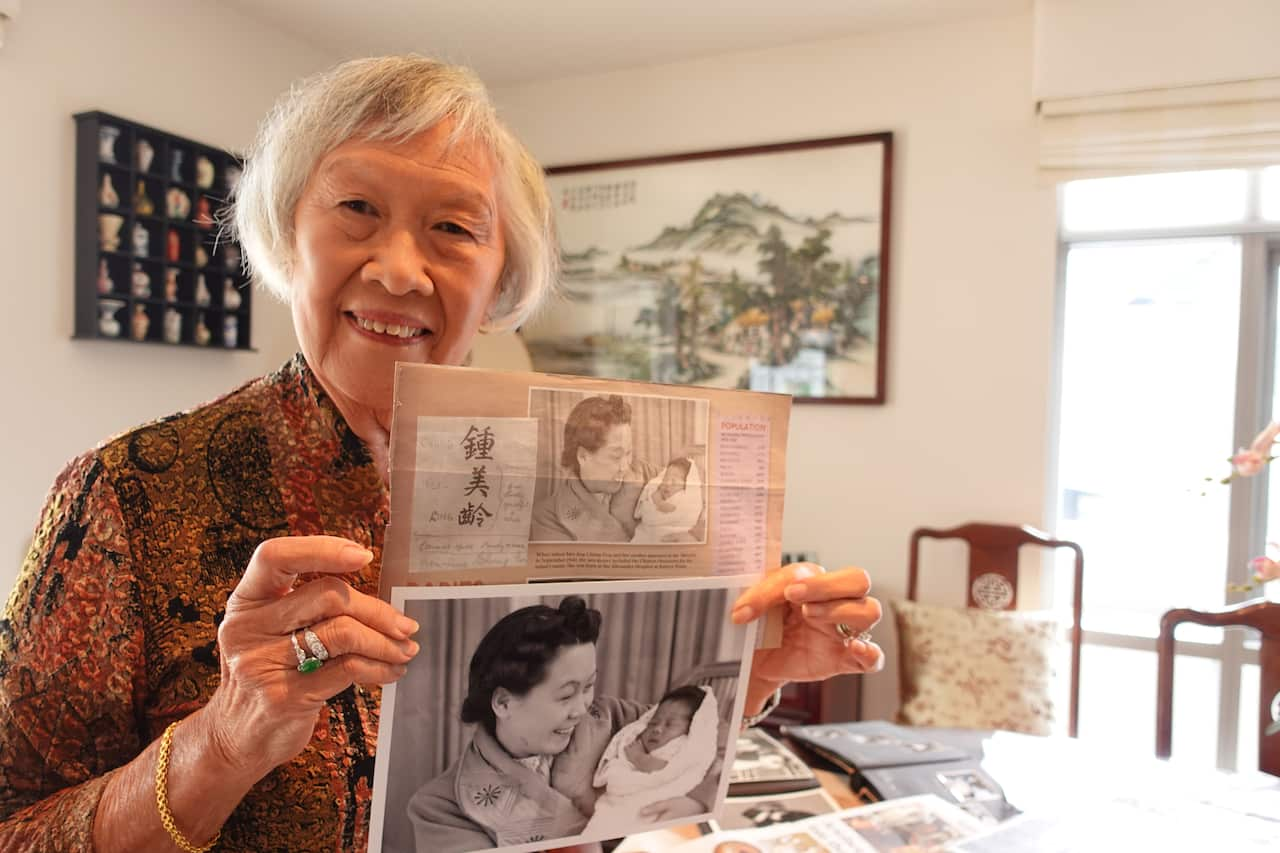
When Mei Ling was born in 1940, a local Tasmanian newspaper published a picture of her and her mother, calling her "a precious Chinese-Australian infant". Source: SBS / Nicole Gong
His endeavours made him a prominent figure in Launceston, earning recognition beyond his lifetime.
The Chung Gon family
In 1873, 18-year-old James embarked on a journey from China's Guangdong Province to Melbourne, driven by the lure of the Bendigo "Gold Rush", according tocreated by one of his descendants, Ai Lin Chung Gon.
However, upon witnessing the discrimination and mistreatment faced by the Chinese in Bendigo, James relocated to Tasmania, where he arrived in George Town on 16 April, 1878.
He initially worked in the tin mines at Branxholm but then worked in other industries, such as timber-cutting and vegetable farming.

James on one of his tractors, working the ground. Source: Supplied / chung-gon.com by Ai Lin Chung Gon
Their venture proved immensely successful, enabling James to acquire an 81-hectare farm at Turners Marsh, 22 km north of Launceston, where he cultivated a thriving vegetable garden.
In 1885, James, then aged 30, married Mei Ying (Mary) Lee, 19, the daughter of a wealthy silkworm farmer on a return trip to China.
The couple then settled in Australia and had 12 children, one of whom was adopted.
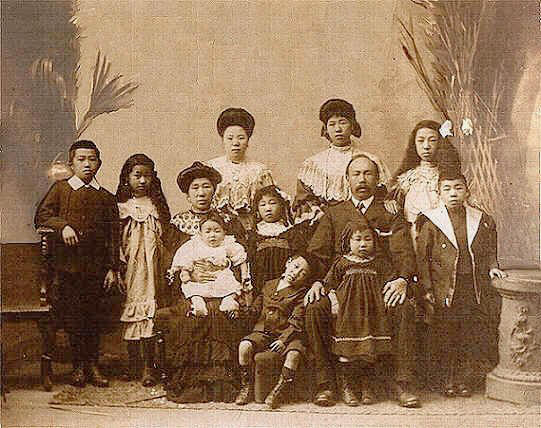
A group portrait of the Chung Gon family including James Chung Gon (third from right) and his wife Mei (Mary) Ying Lee (third from left). Source: Supplied / chung-gon.com by Ai Lin Chung Gon
With James transitioning to become a grocer, entrepreneur, and esteemed philanthropist in Launceston, the Chung Gon family soon became prominent figures locally, leaving a lasting legacy in the island state.
In December 1918, Mary passed away, aged 52.
James lived a long and fulfilling life, reaching the remarkable age of 97, however he never re-married after Mary’s death.

James Chung Gon passed away on 23 February 1952, aged 97. Local newspapers reported the news. Source: Supplied / Adrian Mar
'Old Vauxhall ride' to visit grandfather
As the eldest of James and Mary's seven grandchildren, Mei Ling said she cherished her time spent at her āgōng’s place.
She recounted to SBS Chinese that at least once a month, her parents, Edward (Teddy) Chung Gon and Gladys Sym Choon, would take the family on the three-hour journey from Hobart to Launceston to visit James.
"It took three hours to get there and no seat belts, just three children in the back of an old Vauxhall," she recalled.

James and Mei Ling in the 1940s (left) and (right) James with grandchildren, Mei Ling, Kwokky & baby Bobby (left to right), in Hobart in 1946. Source: Supplied
"We'd walk through the fruit shop and āgōng would be sitting there on his big armchair and in front of him would be the Chinese checkers or snakes (and ladders), ready for us to play," she said.
He had this moustache and he always insisted on a kiss.Mei Ling Chung Gon, granddaughter of James Chung Gon
On Sunday, Mei Ling and her āgōng would walk down Elizabeth Street to the Gateway Baptist Church, where James was a lay preacher.
He always had a seat in the front pew and promptly went to sleep. I'd be so embarrassed.Mei Ling Chung Gon

One of James Chung Gon's greengrocer's shops in Launceston. Source: Supplied / chung-gon.com by Ai Lin Chung Gon
"I can remember all the old Chinese in High Street there," she said.
They’d be sitting there smoking on these kerosene tins … They all spoke Chinese and had gold teeth.Mei Ling Chung Gon

Like many women in China in that era, Mary had bound feet. Her shoes are now displayed in the Queen Victoria Museum. Source: Supplied / Mia Jones
Visits to the ancestral village in China
The descendants of Chung Gon's family have embarked on several journeys to James' hometown, Ping Gang Cun in Guangdong Province, in search of their family history and to reconnect with relatives in China.
In 2019, Mei Ling, who married Graham Niel, travelled to the ancestral village accompanied by her son, Jarran Graham Niel, and her granddaughter, Alissa Kate Niel.
During their brief two-day visit, Mei Ling said she had had the opportunity to meet her cousin and his wife.
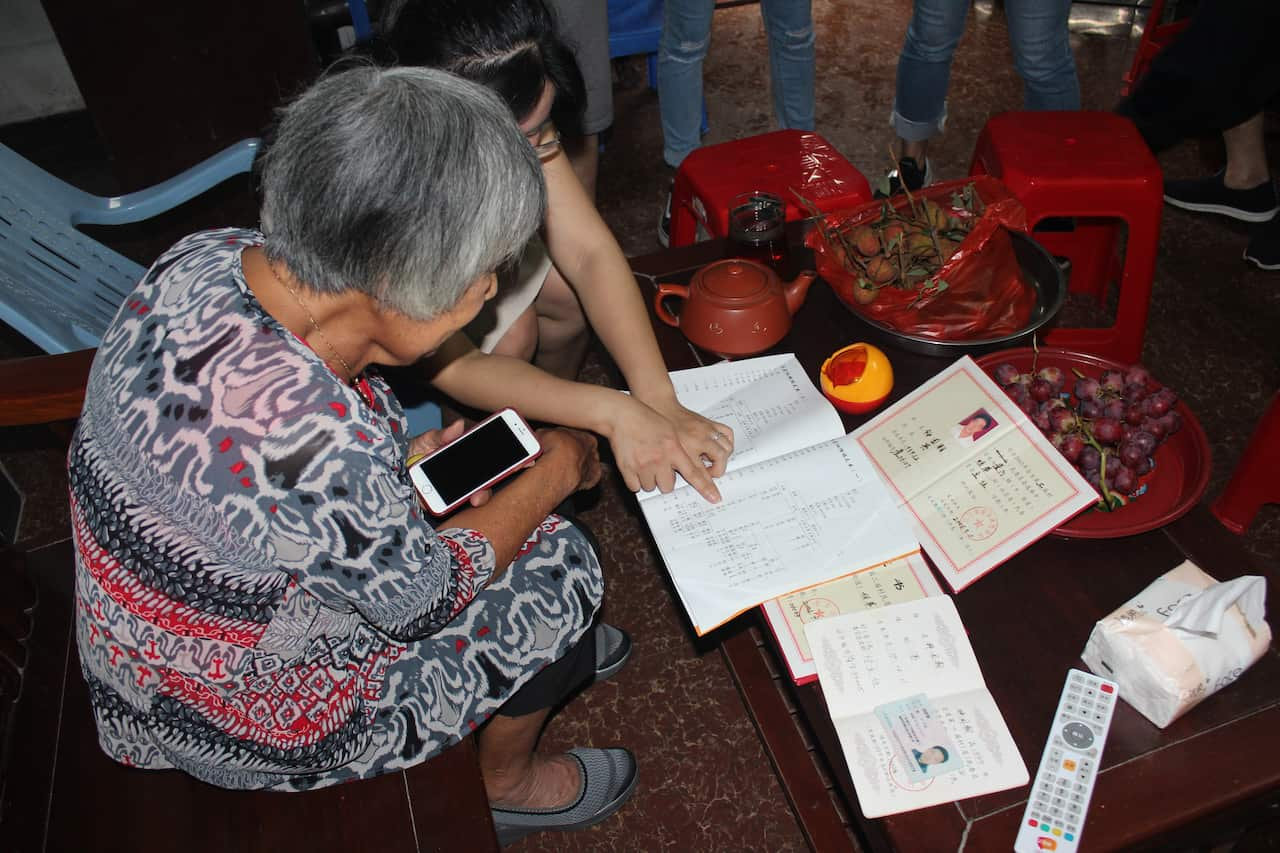
Mei Ling Chung Gon visited their ancestral village in China in 2019, where she met her cousin. Source: Supplied / Mia Jones
Reflecting on the trip, Mei Ling shared that her brother had previously visited the village years ago and had gifted her cousin with a cap.
He [my cousin] still had the cap my brother gave him. He was so proud of it.Mei Ling Chung Gon
In 2009, Mei Ling’s younger brother, Bob Chung Gon, visited their family village with his daughter, Anita Su Ming Chung Gon, where they had been given, "the most wonderful reception from our relatives."

Some photographs of Bob Chung Gon's trip to their family village in China in 2009. Source: Supplied / chung-gon.com by Ai Lin Chung Gon
Our 44 hours in Guandong Province was a really overwhelming, emotional whirlwind experience and Anita and I enjoyed every minute of it.Bob Chung Gon, grandson of James Chung Gon
The next generation
Last year, to celebrate James’ 150th anniversary of coming to Australia, 113 descendants travelled from across the world to Launceston to attend a family reunion on 15 and 16 April.
Mia Jones, Mei Ling’s daughter, was one of the main organisers of the reunion.
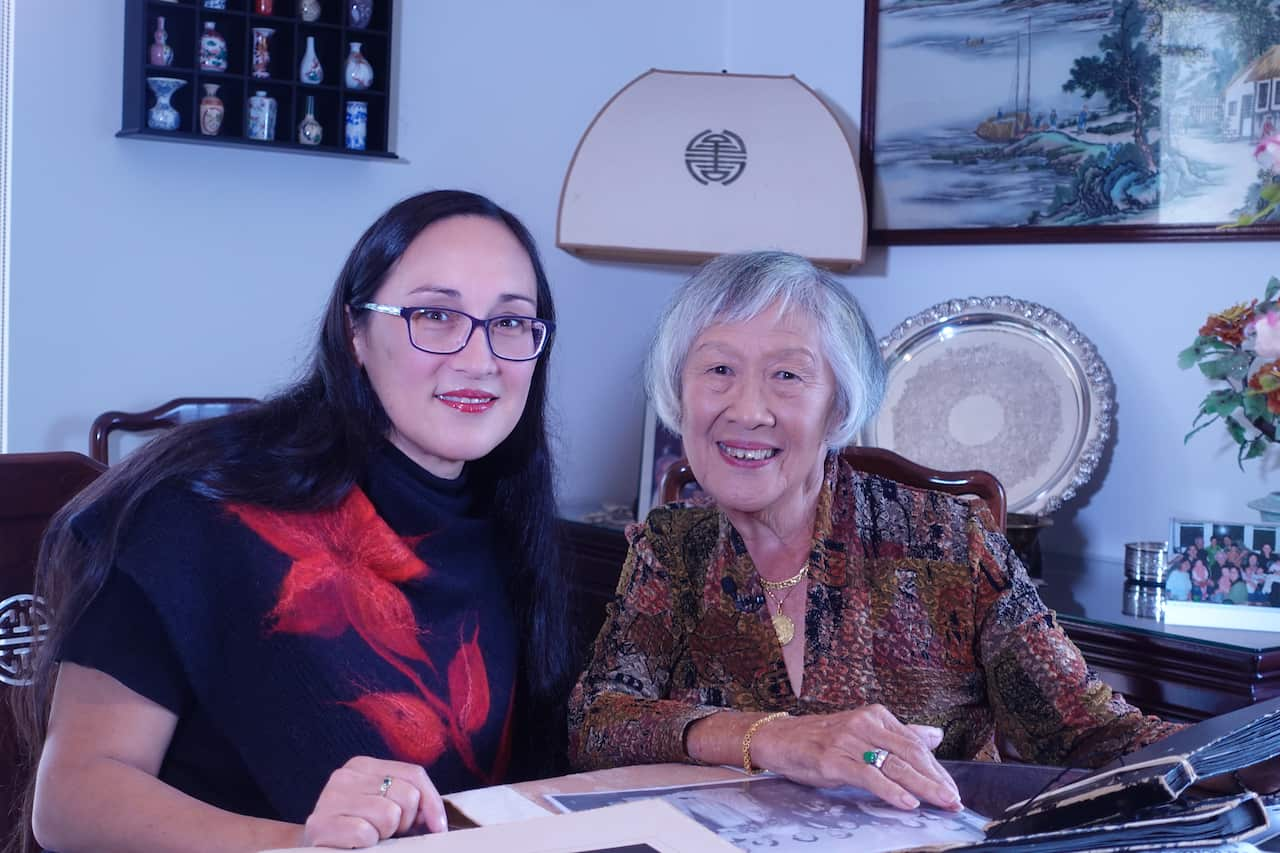
Mia Jones (left) and her mother, Mei Ling Chung Gon (right) in Melbourne. Source: SBS / Nicole Gong
"When we looked at the family tree, you could see exactly where everybody fitted in, and it was amazing," Mia said.

The family tree of the Chung Gon family, spanning six generations. Source: Supplied / Mia Jones
"It was really lovely for family members who had never had the opportunity to go there, to actually have that experience," she said.
Sometimes I forget how significant the Chung Gon family is within Tasmania ... when you say the name Chung Gon, people know, people connect.Mia Jones, James' great-granddaughter

Mei Ling Chung Gon and her descendants outside the Chung Gon house in Turners Marsh during the bus tour in April 2023 (main) and the original house (inset). Source: Supplied / Mia Jones/Adrian Mar
"I want my children to know what their heritage is," she said.
"Even though they may not look Chinese, they know they are."
